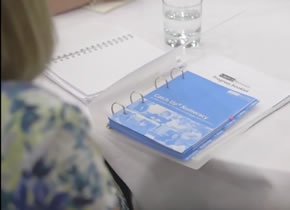
Request a full Catch Up® information brochure and details of our free information webinars
Find out more
Welcome back to my blog and today’s topic - Guzintas. Though not the spicy cuisine they may sound like, they can raise some learners’ temperatures as high as the hottest chilli. So what are these mysterious Guzintas? Division calculations. (As in ‘two guzinta six, three times’!)
They are a necessary evil, I’m afraid, as an ability to divide is essential to calculate with fractions and percentages, amongst other things.
Learners normally first meet division in KS1 but might still be experiencing difficulties well into Key Stage 3. So why the problems? I believe there are a number of issues responsible and I apologise here for the length of this blog, but it reflects the profound difficulties that are experienced by many learners.
Firstly, there is an assumption that learners will automatically understand and utilise the relationship between multiplication and division. This can often be seen by an emphasis on multiplication in commercial maths schemes, with a much-reduced lesson time spent on division, and this could be one cause of the problems experienced with division. It can be a dangerous assumption, particularly for the learner for whom multiplication is still causing problems. (Remember that multiplication uses numbers as a process, rather than as a finite quantity.)
Secondly, there is not an equal weighting given to the different concepts involved in division. At the primary stage, division calculations should reflect both the ‘sharing equally’ concept and the ‘grouping’ concept. However, there can be a tendency for an overemphasis in the early years on sharing equally. If asked to form a word problem from the number sentence 12 ÷ 4, the vast majority of learners would give you a ‘share equally’ scenario. For example, “If you share 12 sweets equally amongst 4 children, how many will each child get?” – an answer of 3 for each child. However, 12 ÷ 4 can also translate into “I have 12 sweets. If I give 4 to each child, how many children can have sweets?” I would suspect that only a minority would suggest a ‘grouping’ scenario independently.
Thirdly, the same calculation (12 ÷ 4) also reflects finding a quarter of 12, with division directly relating to a fractional part – a further complication for some learners.
Fourthly, the move towards written division calculations can rely heavily on remembering a process, without always developing the understanding needed to relate it to the specific layout. This problem can be compounded by the differing approaches of the chunking method and traditional short and long division methods. Care must be taken that the accompanying vocabulary reflects the written process used.
So what can be done to help?
Catch Up® is the working name of The Caxton Trust, a not-for-profit charity registered in England and Wales (1072425) and Scotland (SC047557) as well as a company limited by guarantee (03476510). Catch Up is a registered trademark.
The Catch Up® Web site use "cookies" to help you personalise your online experience. A cookie is a text file that is placed on your hard disk by a Web page server. Cookies cannot be used to run programs or deliver viruses to your computer. Cookies are uniquely assigned to you, and can only be read by a web server in the domain that issued the cookie to you.
Click on the different category headings below to find out more. You can change your default settings very easily. To turn cookies on, click the button to the right. To turn cookies off, click the buttons to the left. Please read our cookie policy to find out more.
Performance monitoring cookies: Google Analytics cookies (_ga,_gid) - these can last up to 2 years.
Strictly necessary cookies used by the site content management system: PHPSESSID (used to record your logged in session) and allow_cookies (used to record that the user has consented to cookies) - these are either temporary (session) cookies or expire after no more than 30 minutes and are used to provide functionality as you navigate around the site and allow you to access secure areas.